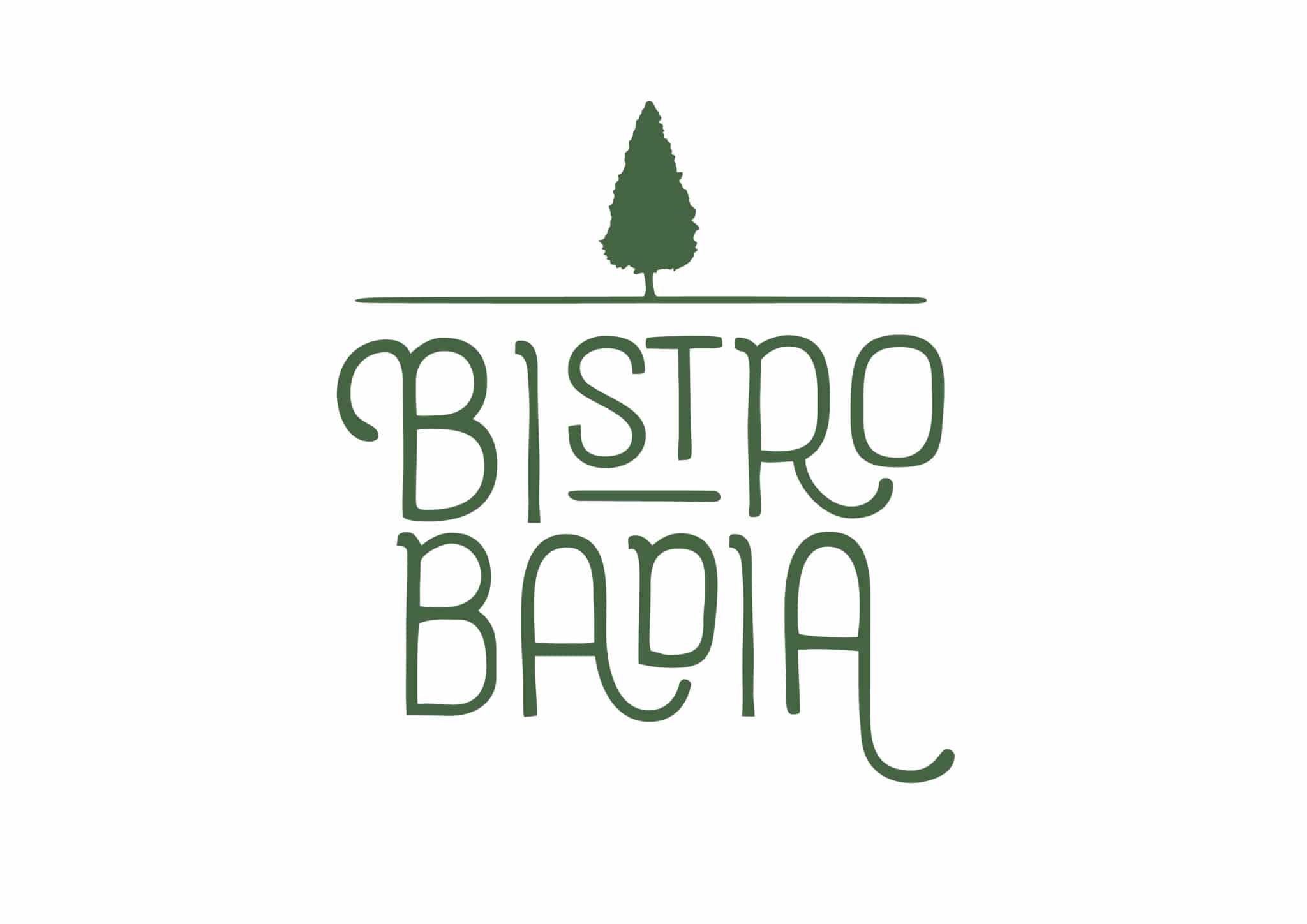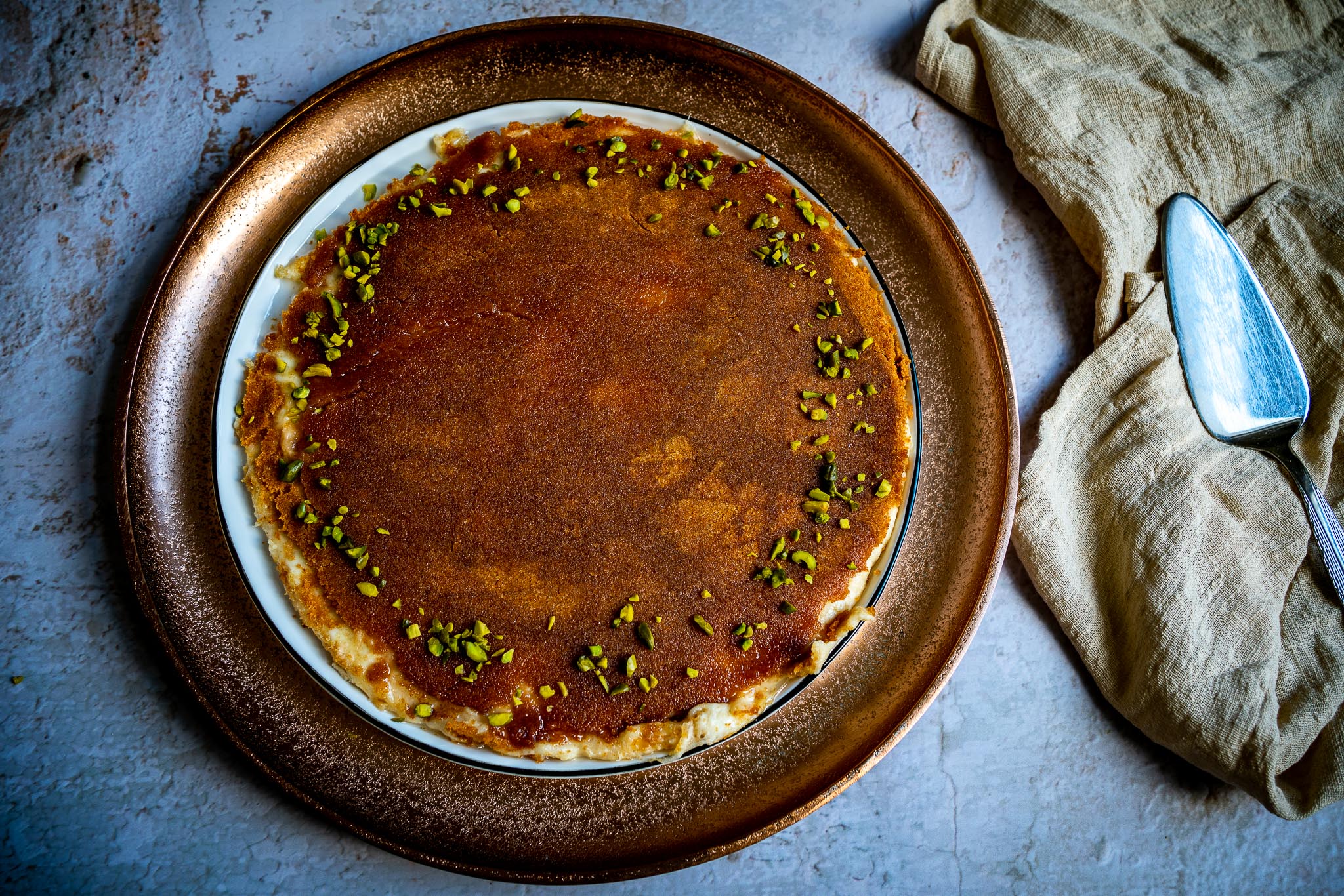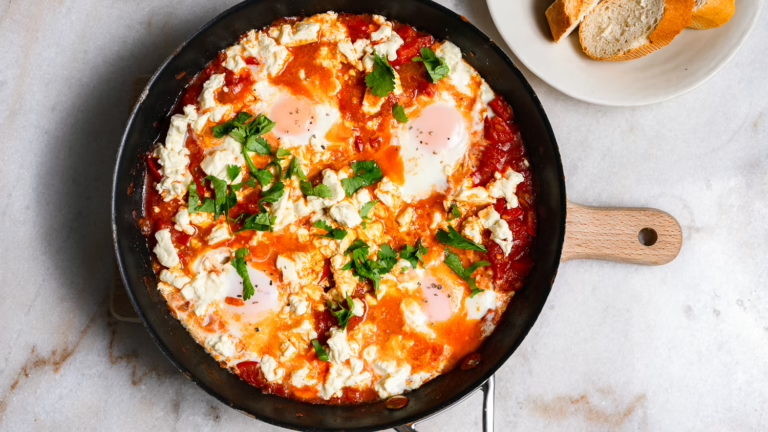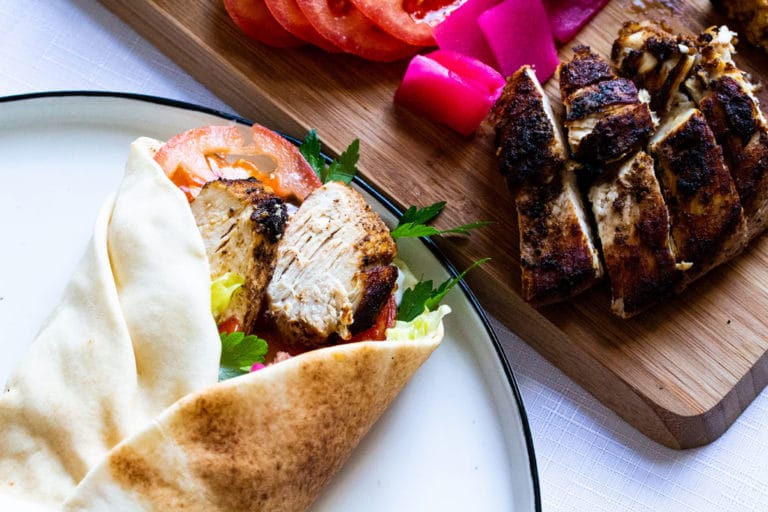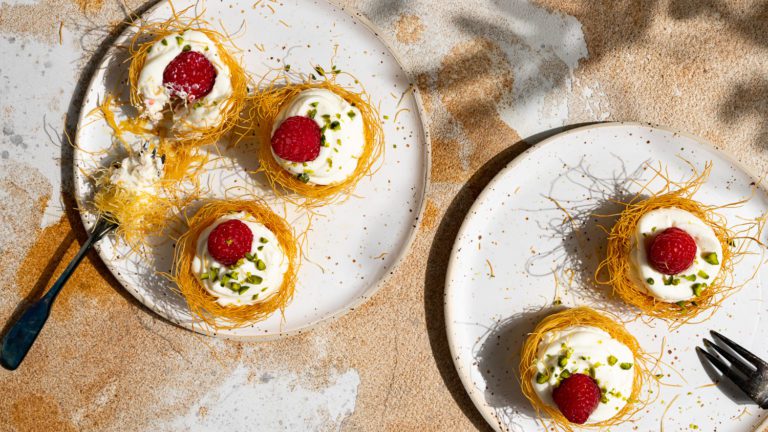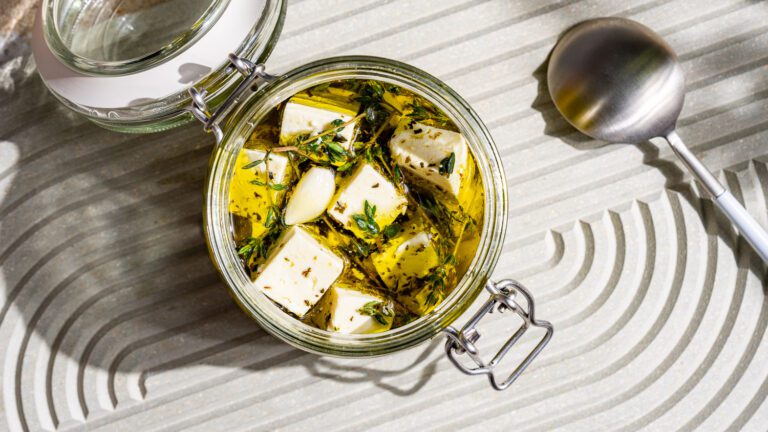Knefeh (Na’ahme) – Probably the most popular dessert in the Levant
Knefeh is probably the most popular dessert in the Levant and the entire Arab world. Everyone knows it and everyone loves it. Of course, every family has its own recipe and there are sometimes significant differences from country to country. This version is called Knefeh Na’ahme and is the Lebanese version of the popular dessert.
What is Knefeh anyway?
Knefeh, Knefe, Knafeh, Kunafa or Künefe is a dessert that usually consists of two layers. The top layer is a lid or, better said, a crispy crust. Underneath is the second layer of melting cheese. And sometimes also from a custard cream (ashta). To serve, pour sugar syrup refined with orange blossom and rose water over the top as desired.
The lid – the crispy crust
In most cases, the lid of Knefeh is made of kadaifi (or kataifi). This is a wafer-thin dough that is made into super fine pasta. Kadaifi is also nicknamed “angel hair” precisely because the threads are so thin and fine.
The cheese
The cheese used is usually desalted as far as possible. It is therefore better not to use Gouda. Traditionally, a white cheese typical of the country is used. But don’t worry, you don’t have to get on a plane to be able to prepare knafeh.
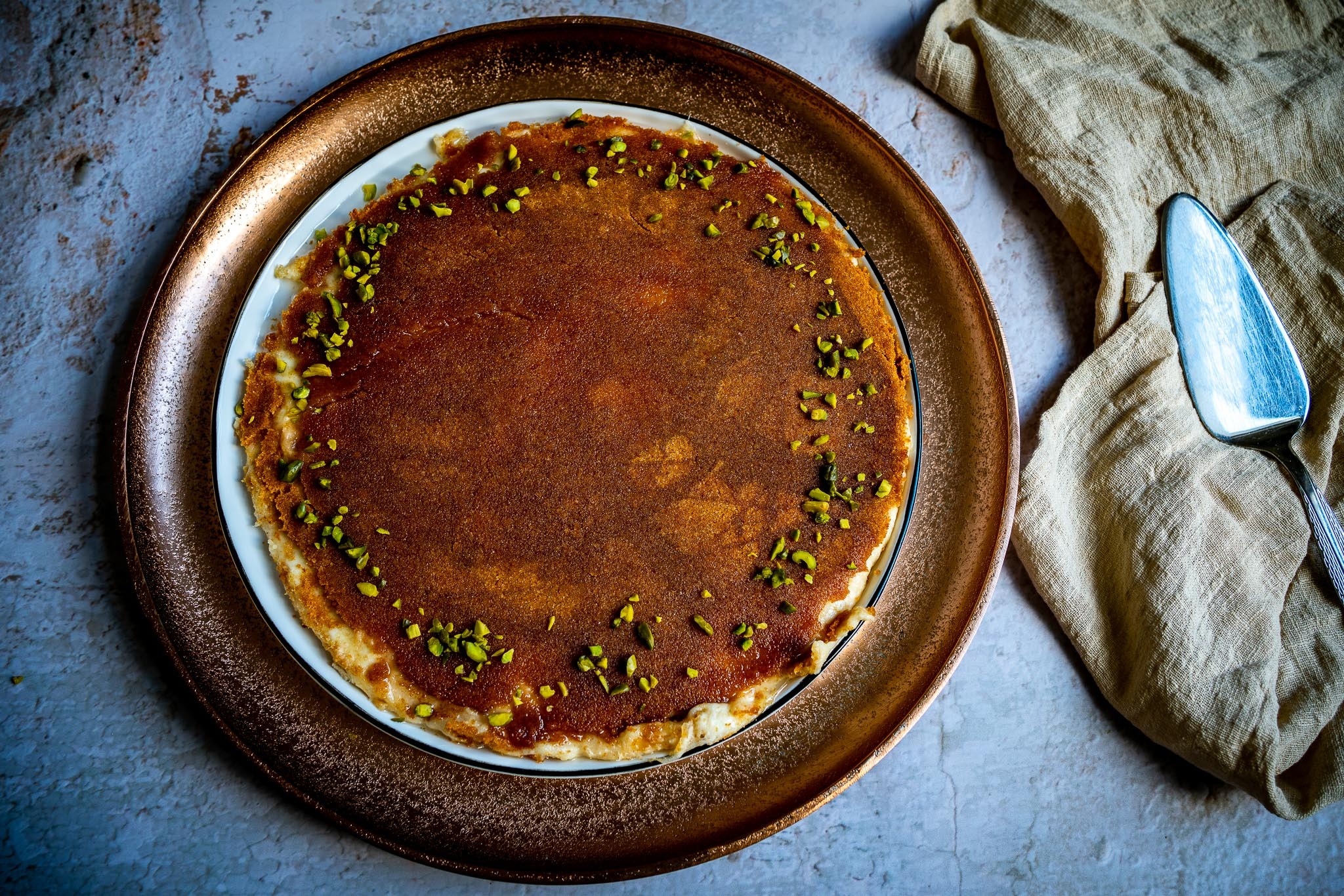
Variants of the dessert
Incidentally, the lid varies depending on the country and recipe. It can be delicate and fine, coarse or a mixture of fine and coarse.
- khishneh or knishna: is the coarse version with the noodle-like threads of the kadaifi.
- na’ama or na’ahme: is the fine version, which is prepared with semolina.
- mhayara: is a mixture of the other two variants.
In Lebanon, they like to use a lid made of semolina. Just like the variant I would like to present to you here.
Where does Knefeh come from?
There is wild speculation about the origin of the dessert. There are various stories – the original recipe is said to come from the city of Nablus in Palestine. From there, the dessert is said to have spread to other countries and adapted to their regions. Then again, there are stories that say that the dessert has its roots in Egypt or Syria. So I can’t answer where exactly Knefeh comes from. What I can tell you is that this dessert brings people together and strengthens the sense of togetherness and community. Because it is rarely eaten alone. That’s why it tastes twice as good.
Sweet breakfast
Knefeh Na’ahme means as much as tender or gentle Knefeh. The dessert was given this nickname because the top is made of semolina dough. This semolina dough is pre-baked and ground into a powder once again after baking. Only then is it further processed with butter or ghee to form the lid. Okay, so you see, you don’t necessarily need the special ingredient kadaifi. But you don’t necessarily have to master the semolina dough procedure either. I know a great shortcut thanks to my sister…
Before I tell you the shortcut, you need to know that the Lebanese are totally crazy about Knefeh for breakfast. But not somehow, you actually make a sandwich out of it! The bread is made with delicious kaak, stuffed with knefeh (or knafeh) and a good dash of sugar syrup.

Knefeh for breakfast: Simply fill the Lebanese sesame bread with Knefeh and drizzle a dash of sugar syrup over it.
The Lebanese street bread kaak, which you can carry like a bag, also tastes good with labneh or olive tapenade. Try out this simple recipe.
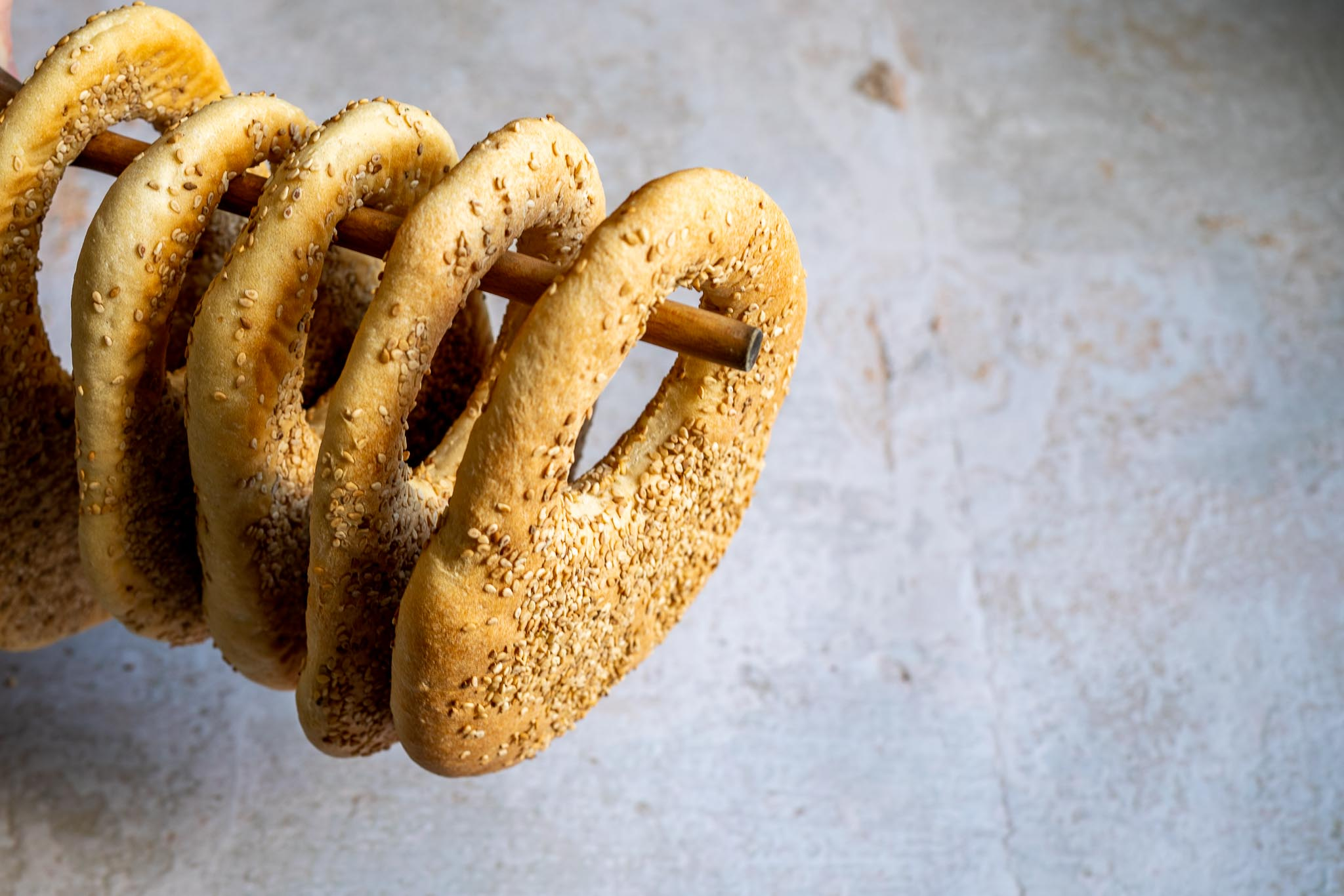
My sister’s recipe
I really thought long and hard about whether it would be okay to cheat here – and it is. You can’t get kadaifi everywhere, and not the cheese anyway. But I really want everyone to be able to make Knefeh at home. So I’ll give you the main ingredients that you can also get here in any supermarket or that you may even have at home.
Ingredients for my family recipe:
- Rusk
- Butter
- Mozzarella cheese
- Milk
- Soft wheat semolina
- Sugar
- Rosewater
- Orange blossom water
- lemon juice
- chopped pistachios
The preparation – My sister’s secret
My sister told me about Knefeh “Kisbeh”. Kisbeh means “cheated” or “lie”. Don’t worry, I don’t want you to lie. It’s all about imitating ingredients and speeding up preparation: a shortcut.
Instead of kadaifi or semolina dough, we now use standard rusks and instead of a cheese from Lebanon, we use mozzarella. Incidentally, the mozzarella version is already very popular at Knefeh, as the cheese is also mild, melts very well and pulls beautiful strings.
And to make the cheese layer really super creamy and cheesy, we add a layer of delicious semolina pudding. This makes Knefeh even tastier, fluffier and creamier.
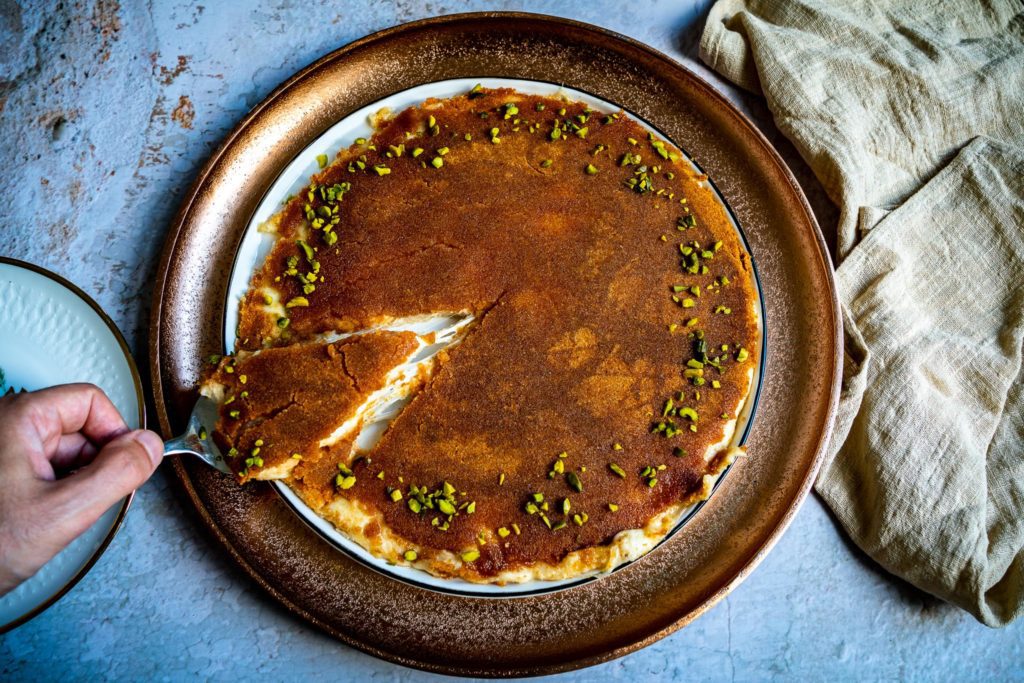
- For the sugar syrup, boil the sugar and water down to a syrup and refine with orange blossom water and lemon juice.
- For the lid, crush the rusks in a blender and mix with the butter and rose and orange blossom water.
- Spread the rusk mixture in a springform pan and press down lightly.
- Cut the mozzarella into slices and place on the lid.
- Mix all the ingredients for the pudding together, bring to the boil and allow to thicken to a creamy pudding.
- Pour the pudding onto the cheese layer and bake the Knefeh in the oven until crispy.
- Pour sugar syrup over the dessert while still hot before serving and garnish with pistachios.
How long does the cheesy dessert keep?
You can prepare the kunafa 1-2 days before you actually serve it and store it covered in the fridge. Then all you have to do is put it in the oven and serve it hot so that the cheese pulls nice strings and the crust is crispy.
Another method of preparation is freezing. Simply prepare Knefeh according to the recipe and then you can freeze it for up to 6 months.
I hope you enjoy cooking the recipe and, of course, bon appétit.
Recipe for Knefeh (Na’ahme)
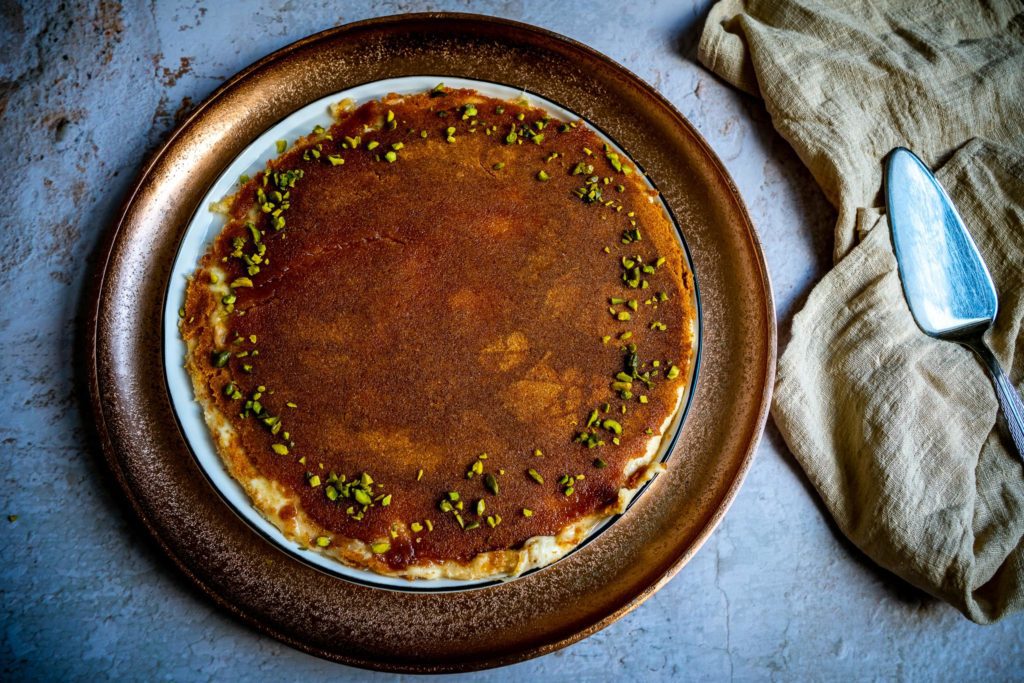
Equipment
- Serving plate with approx. 30 cm diameter
Ingredients
Sugar syrup
- 180 g Sugar extra fine
- 150 ml Water
- 1 TSP Orange blossom water
- 1 TSP Lemon juice
For the lid
- 100 g Rusk
- 60 g Butter
- 1 TSP Rose water
- 1 TSP Orange blossom water
Cheese layer
- 3 Balls Mozzarella
For the pudding
- 400 ml Milk
- 50 g Soft wheat semolina
- 1 TSP Sugar
- 1 TSP Rose water
- 1 TSP Orange blossom water
Set
- 20 g chopped pistachios
Zubereitung
Sugar syrup
- Heat the sugar and water over high heat, stirring, until the sugar has completely dissolved. Bring to the boil and reduce to medium. Simmer for approx. 5 minutes until a thin syrup has formed. The syrup will thicken further as it cools. Allow the syrup to cool.
Cover
- Preheat the oven to 200°C.
- For the lid, grind the rusks in a blender until they are a uniform, slightly coarse powder. If you don't have a blender, you can also put the rusk in a freezer bag, seal it and beat it with a rolling pin until it is crumbly.
- Mix the rusk powder with butter and rose and orange blossom water.
- Butter the base of the springform pan or line it with baking paper. I recommend baking parchment: only line the bottom and clamp the ring onto the paper so that the paper peeks out. Cut away the paper on the outside with scissors. This way, only the bottom is covered with paper.
- Spread the rusk mixture over the base and press down gently.
Cheese layer
- Allow the mozarella to drain properly for about 5 minutes, cut into slices and place on the lid.
Pudding
- Mix all the ingredients for the pudding together, bring to the boil and allow to thicken to a creamy pudding for about 5 minutes while stirring.
- Pour the pudding on top of the cheese layer and bake the Knefeh in the oven for approx. 20 minutes.
Knefeh
- Remove the knefeh from the oven, use a spatula or butter knife to loosen the sides of the knefeh from the edge of the springform pan and carefully open the springform pan.
- Place an appropriately sized plate on top of the Knefeh and carefully turn it upside down (hot!!). Carefully remove the base of the springform pan and the baking paper from the lid.
- Garnish the Knefeh immediately with pistachios and serve still hot with sugar syrup.
Notes
Nährwerte
Would you like to try more dessert recipes from the Levant? Then try the pudding rolls Halawet el jibn, the layered dessert Aish el Saraya or the trendy dessert Dubai chocolate in a jar.
